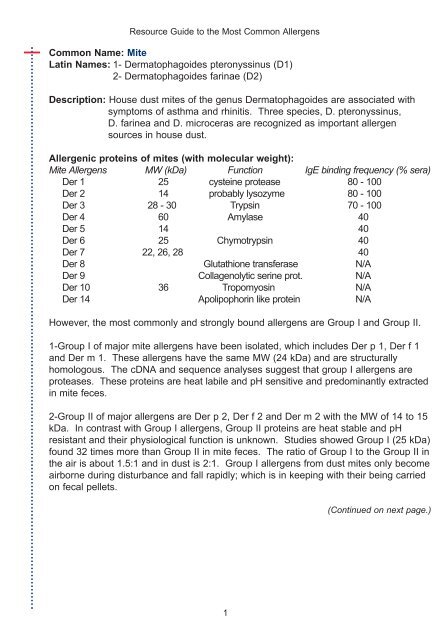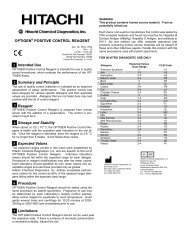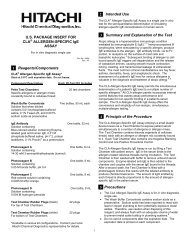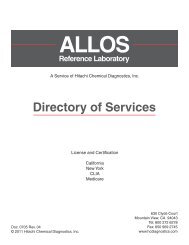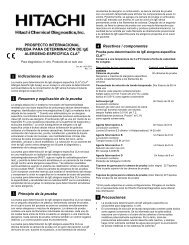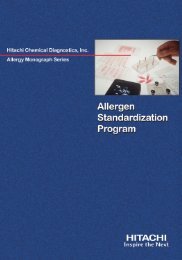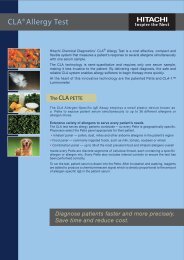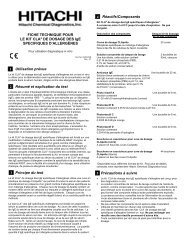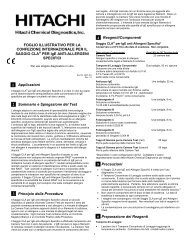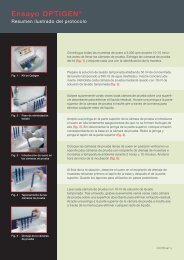Allergen Resource Guide - Hitachi Chemical Diagnostics
Allergen Resource Guide - Hitachi Chemical Diagnostics
Allergen Resource Guide - Hitachi Chemical Diagnostics
Create successful ePaper yourself
Turn your PDF publications into a flip-book with our unique Google optimized e-Paper software.
<strong>Resource</strong> <strong>Guide</strong> to the Most Common <strong>Allergen</strong>s<br />
Common Name: Mite<br />
Latin Names: 1- Dermatophagoides pteronyssinus (D1)<br />
2- Dermatophagoides farinae (D2)<br />
Description: House dust mites of the genus Dermatophagoides are associated with<br />
symptoms of asthma and rhinitis. Three species, D. pteronyssinus,<br />
D. farinea and D. microceras are recognized as important allergen<br />
sources in house dust.<br />
<strong>Allergen</strong>ic proteins of mites (with molecular weight):<br />
Mite <strong>Allergen</strong>s MW (kDa) Function IgE binding frequency (% sera)<br />
Der 1 25 cysteine protease 80 - 100<br />
Der 2 14 probably lysozyme 80 - 100<br />
Der 3 28 - 30 Trypsin 70 - 100<br />
Der 4 60 Amylase 40<br />
Der 5 14 40<br />
Der 6 25 Chymotrypsin 40<br />
Der 7 22, 26, 28 40<br />
Der 8 Glutathione transferase N/A<br />
Der 9 Collagenolytic serine prot. N/A<br />
Der 10 36 Tropomyosin N/A<br />
Der 14 Apolipophorin like protein N/A<br />
However, the most commonly and strongly bound allergens are Group I and Group II.<br />
1-Group I of major mite allergens have been isolated, which includes Der p 1, Der f 1<br />
and Der m 1. These allergens have the same MW (24 kDa) and are structurally<br />
homologous. The cDNA and sequence analyses suggest that group I allergens are<br />
proteases. These proteins are heat labile and pH sensitive and predominantly extracted<br />
in mite feces.<br />
2-Group II of major allergens are Der p 2, Der f 2 and Der m 2 with the MW of 14 to 15<br />
kDa. In contrast with Group I allergens, Group II proteins are heat stable and pH<br />
resistant and their physiological function is unknown. Studies showed Group I (25 kDa)<br />
found 32 times more than Group II in mite feces. The ratio of Group I to the Group II in<br />
the air is about 1.5:1 and in dust is 2:1. Group I allergens from dust mites only become<br />
airborne during disturbance and fall rapidly; which is in keeping with their being carried<br />
on fecal pellets.<br />
1<br />
(Continued on next page.)


